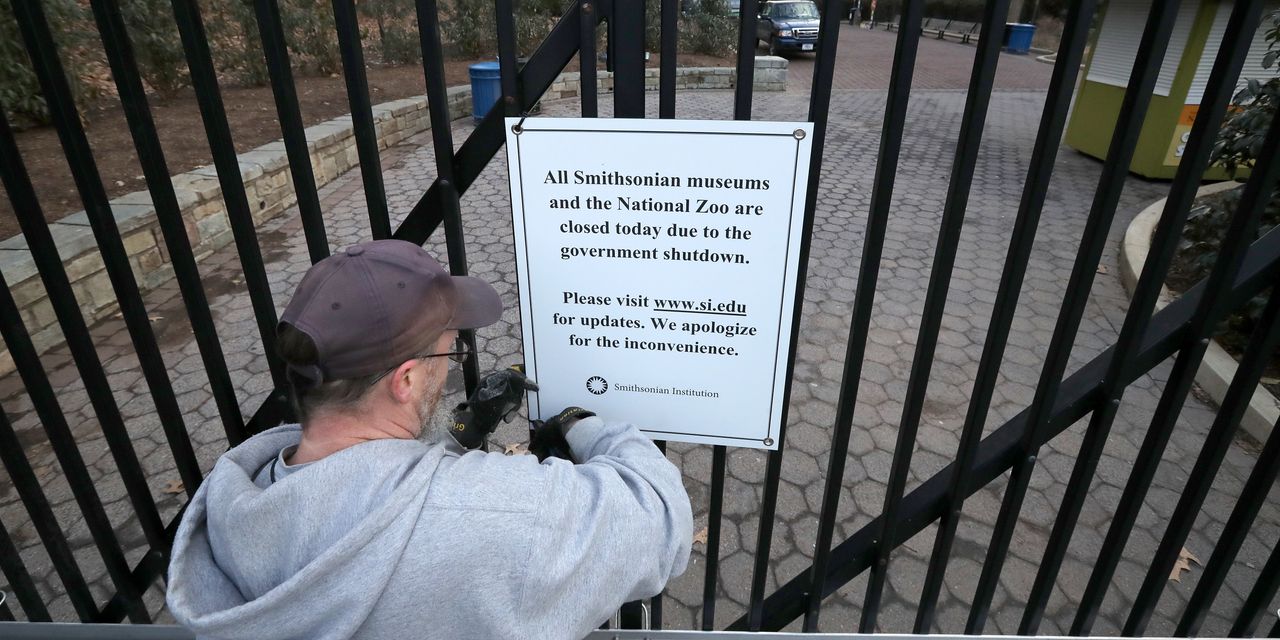The U.S. federal government is barreling towards a partial shutdown after Sept. 30 if lawmakers don’t act before then, putting workers’ paychecks and environmental and food inspections — but not, historically, the stock market — at risk.
House Speaker Kevin McCarthy has raised the idea of a short-term funding bill with his fellow Republicans to keep the government open, but with a little more than two weeks to go before funding expires, there isn’t consensus on such a move. Some House Republicans are seeking spending targets for the coming fiscal year at levels below those in an agreement McCarthy struck with President Joe Biden in a debt-ceiling deal. The fiscal year begins Oct. 1.
Investors may not be hurt by a shutdown. As MarketWatch has reported, there have been six government shutdowns since 1978 that lasted five days or more, and the S&P 500 index
SPX
gained in the four most recent shutdowns.
Now read: House returns to face shutdown fears: What does it mean for markets?
But visitor services at national parks may stop, passport applications could be delayed, and many workers at agencies like the Securities and Exchange Commission would be told not to show up at the office. Meanwhile, many functions would continue, such as the payment of Social Security and Medicare benefits.
Also see: Biden brushes off House impeachment inquiry, says Republicans want to shut down the government
Here’s a look at what could close and stay open in the event of a partial shutdown, as well as other ways Americans would be affected.
Social Security and Medicare
Social Security and Medicare benefits would continue to be issued in a shutdown, although, as a Brookings Institution explainer notes, services offered by Social Security offices could be limited. The U.S. Treasury is also able to pay interest on Treasury debt on time, the same explainer noted.
National parks
National parks suffered during the 35-day shutdown that spanned December 2018-January 2019. Many parks remained open but went unstaffed, and conservationists warned at the time that damage to sensitive lands could take decades to recover. Smithsonian museums and the National Zoo in Washington were closed as well.
Federal-worker furloughs
Some federal workers deemed “essential” would stay on the job, but hundreds of thousands of others would be furloughed without pay. In the past, they have been entitled to back pay. Some workers considered essential include military personnel, prison guards and border-security agents.
Government data
The economic data released by the U.S. government that investors pore over could also be delayed, depending on the length of a shutdown. For example, a reading on gross domestic product came out a month later than usual, in February 2019, thanks to that year’s shutdown.
Food and environmental inspections
Food and environmental inspections could also be halted. During a shutdown in 2013, the Environmental Protection Agency stopped site inspections for 1,200 different sites that included things like hazardous waste and drinking water, according to the Committee for a Responsible Federal Budget, a nonpartisan group.
U.S. mail
Americans would still receive cards, letters and packages through the mail. The U.S. Postal Service is an independent body that’s funded by selling its products and services, not by tax dollars.
Read next: The government shutdown is ending, after becoming the longest on record — by a wide margin
Read the full article here













Leave a Reply